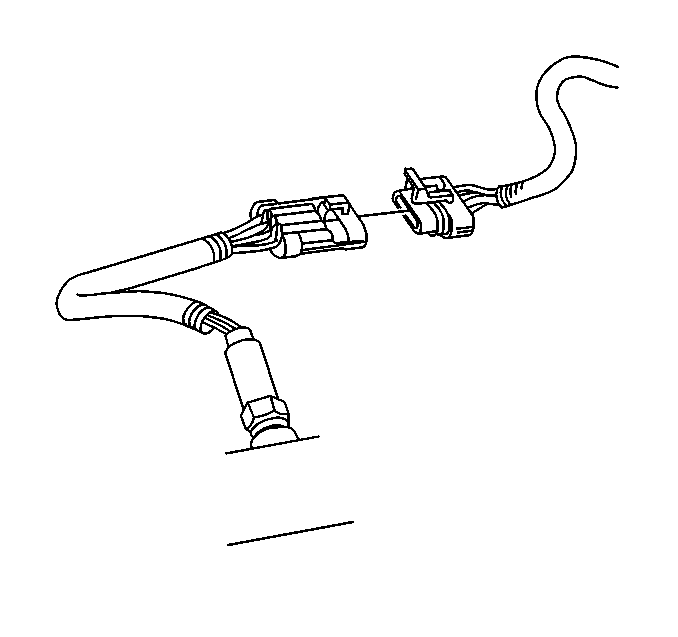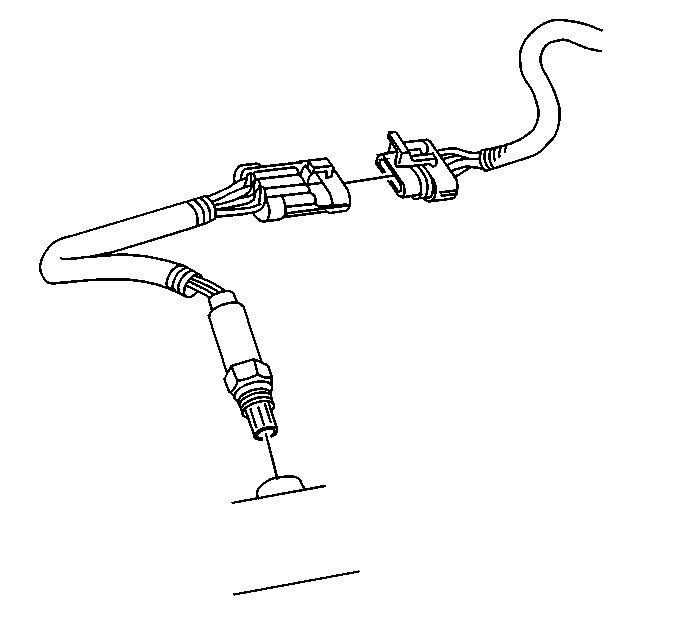Notice: The heated oxygen sensors each use a permanently attached pigtail and connector. Do not remove the pigtail from the heated oxygen sensor. Damage or removal of the pigtail or the connector affects proper operation of the heated oxygen sensor. Handle the oxygen sensor carefully. Do not drop the oxygen sensor. Keep the in-line connector and the louvered end free of grease, dirt, or other contaminants. Do not use cleaning solvents of any type. Do not repair the wiring, the connector, or the terminals. Replace the oxygen sensor if the pigtail wiring, the terminals, or the connector is damaged. Proper oxygen sensor operation requires an external air reference. This external air reference is obtained by way of the oxygen sensor signal and heater wires. Any attempt to repair the wires, the connectors, or the terminals results in the obstruction of the air reference and degrades the oxygen sensor performance. A dropped oxygen sensor is a bad oxygen sensor.
Important:: Use care when handling the heated oxygen sensor (HO2S). The in-line electrical connector and the louvered end must be kept free of grease, dirt, or other contaminants. Also, avoid using cleaning solvents of any type. Do not drop or roughly handle the heated oxygen sensor. A dropped sensor is a faulty sensor.
Removal Procedure
Notice: Removal of the oxygen sensor is easier when the engine temperature is above 48°C (120°F).
Excessive force may damage the threads in the exhaust pipe. It may be necessary to lower the exhaust system to gain sufficient access to an HO2S and the connector.
- Raise the vehicle. Refer to Lifting and Jacking the Vehicle in General Information.
- Determine the location of the HO2S to be removed. Refer to Engine Controls Component Views .
- Disconnect the HO2S electrical connector.
- Carefully remove the HO2S.


Installation Procedure
Important: A special anti-seize compound is used on the heated oxygen sensor threads. The compound consists of graphite suspended in fluid and glass beads. The graphite burns away, but the glass beads remain, making the sensor easier to remove. New sensors or service sensors already have the compound applied to the threads. If a sensor is removed from an engine and is to be reinstalled, the threads must have anti-seize compound applied before reinstallation.
- Coat the threads of the heated oxygen sensor with anti-seize compound GM P/N 5613695 or the equivalent, if necessary.
- Install the heated oxygen sensor.
- Connect the HO2S electrical connector.
- Lower the vehicle.
Notice: Use the correct fastener in the correct location. Replacement fasteners must be the correct part number for that application. Fasteners requiring replacement or fasteners requiring the use of thread locking compound or sealant are identified in the service procedure. Do not use paints, lubricants, or corrosion inhibitors on fasteners or fastener joint surfaces unless specified. These coatings affect fastener torque and joint clamping force and may damage the fastener. Use the correct tightening sequence and specifications when installing fasteners in order to avoid damage to parts and systems.

Tighten
Tighten the sensor to 41 N·m (30 lb ft).

